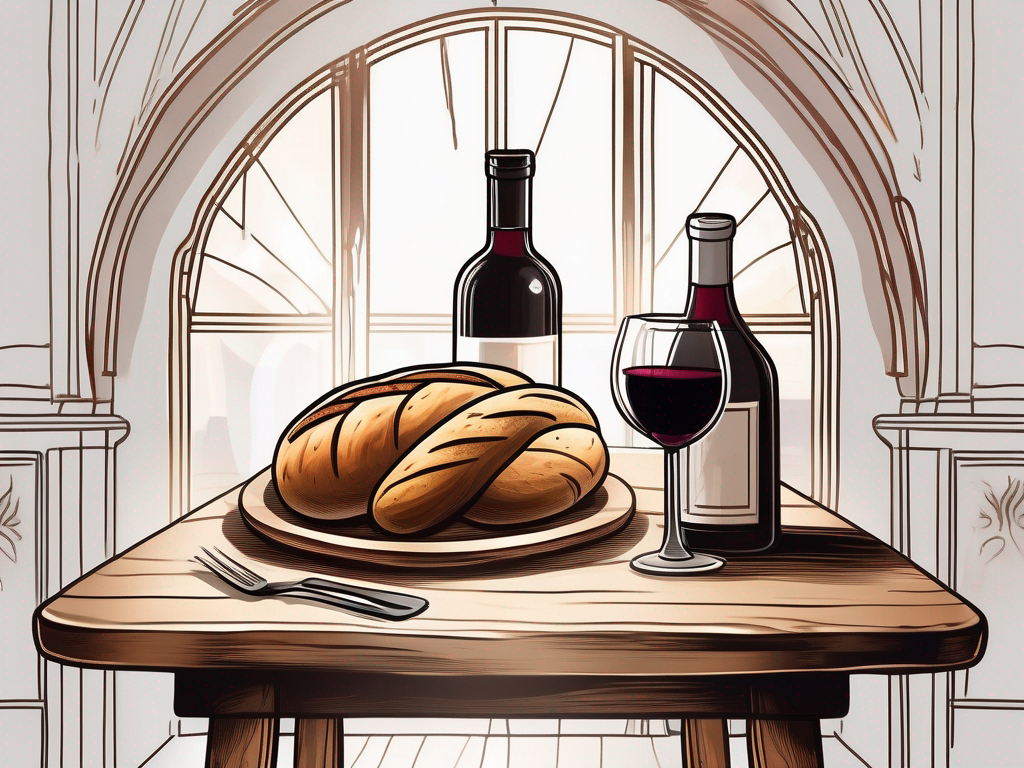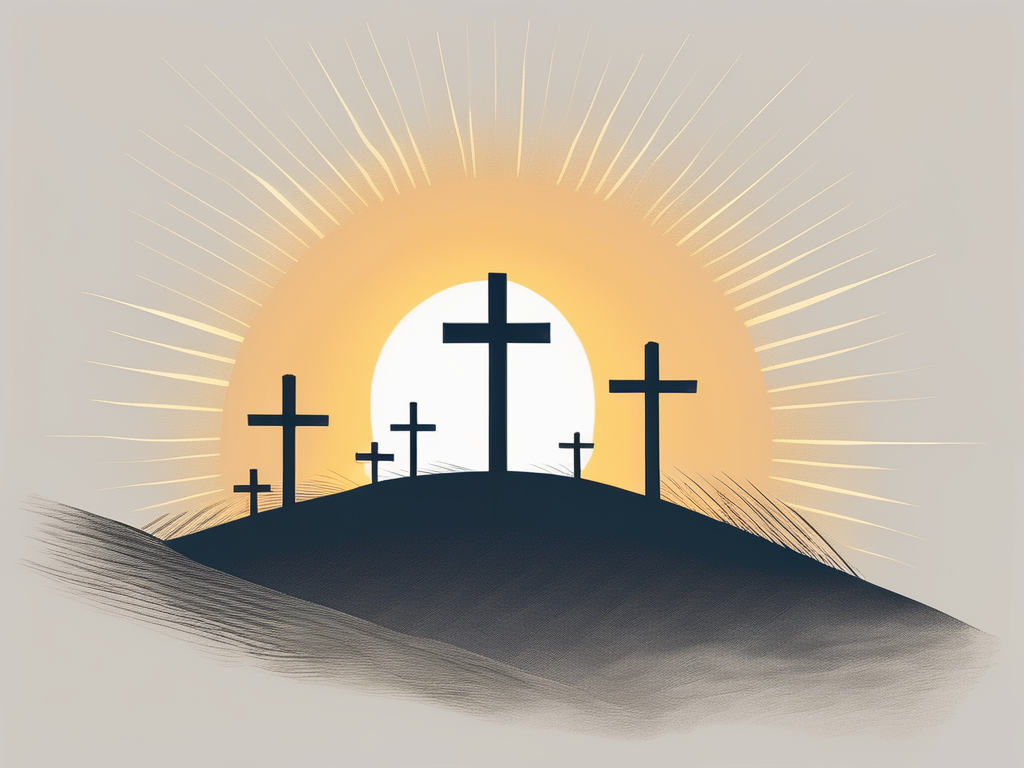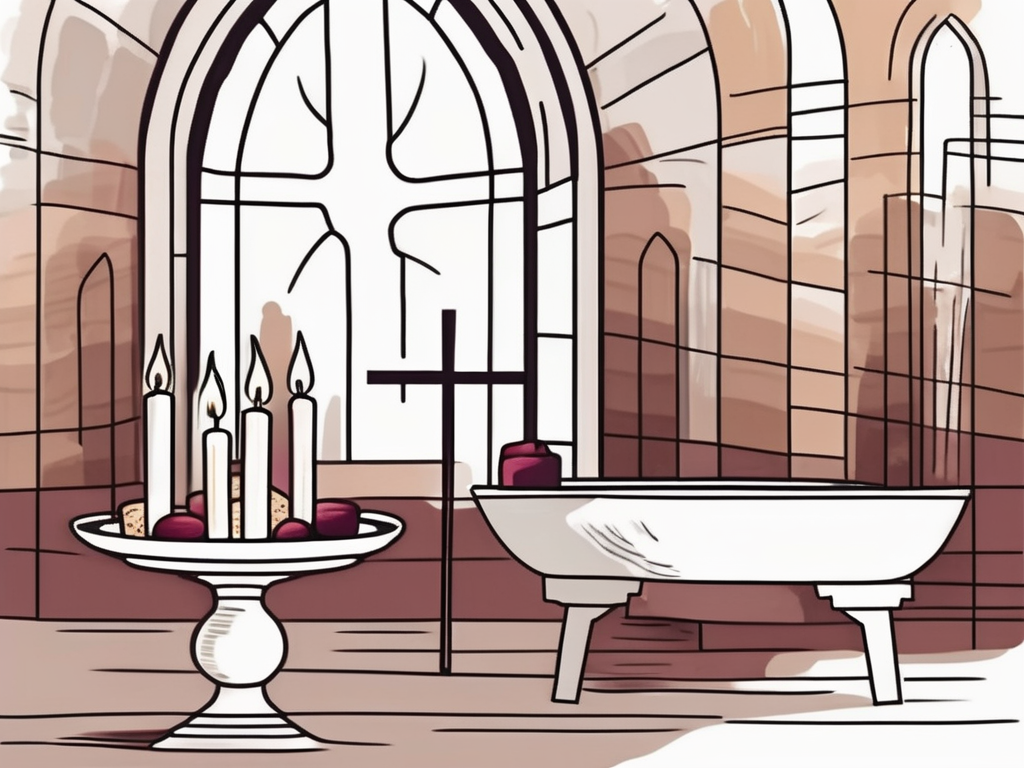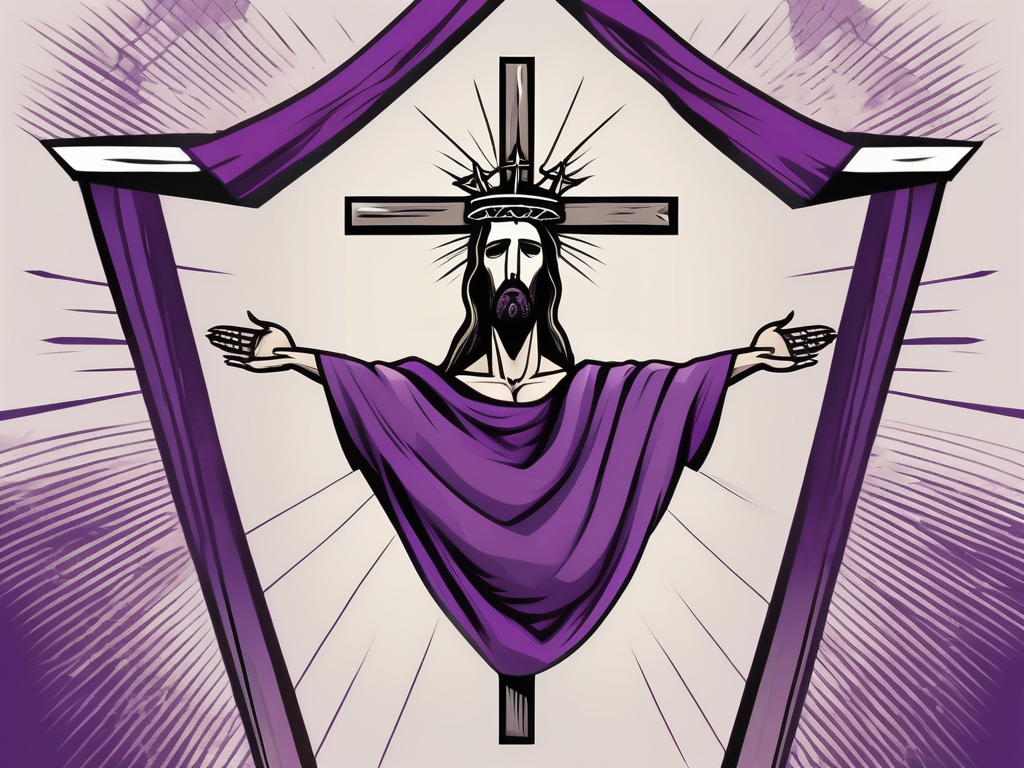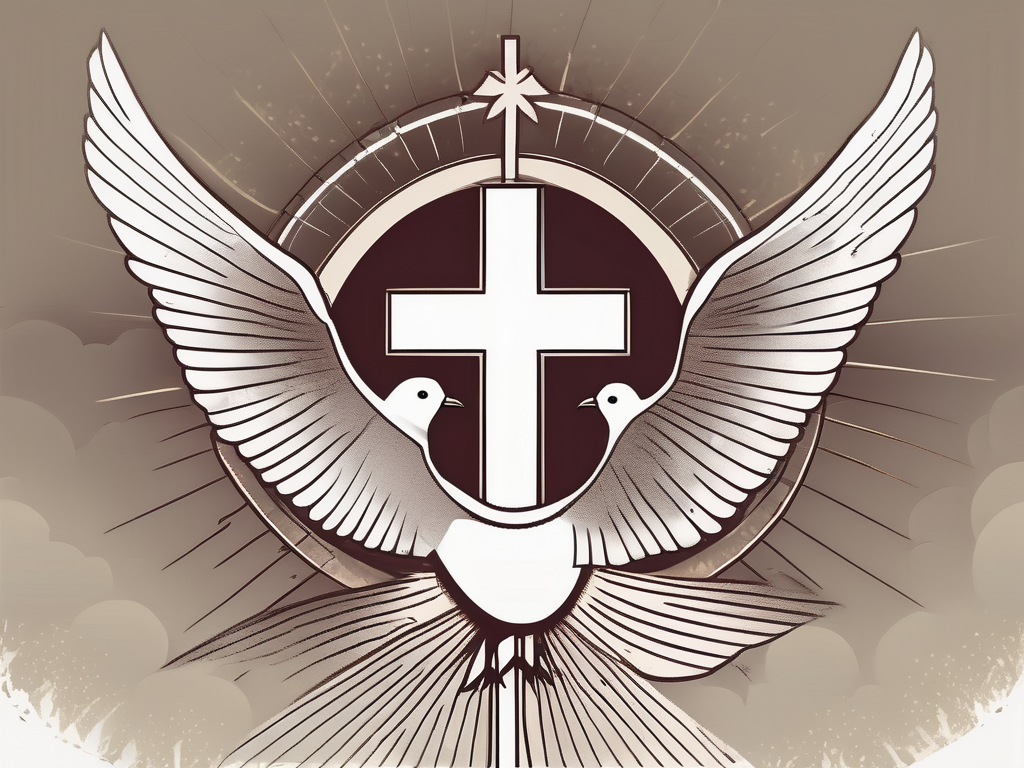The Last Supper is an iconic event in the Bible that holds deep historical and spiritual significance. It is a pivotal moment that marked the beginning of Jesus Christ’s crucifixion and ultimately changed the course of human history. Let’s dive into the details of this extraordinary event and explore its profound meaning.
Understanding the Significance of The Last Supper
The Last Supper, as depicted in the Bible, is a sacred moment that encapsulates various elements crucial to Christian theology and beliefs. It serves as a powerful symbol of sacrifice, redemption, and eternal love. But to truly grasp its profound significance, we must first place it in its biblical context.
The Last Supper took place during the Passover celebration, a well-known Jewish festival. Jesus and his apostles gathered together in an upper room to commemorate this significant occasion. It was during this meal that Jesus revealed the shocking revelation of his imminent betrayal and crucifixion.
This intimate setting allowed Jesus to share crucial teachings, such as the commandment of love and the establishment of the sacrament of communion. These revelations connect the Last Supper to various biblical prophecies and provide a deeper understanding of its spiritual implications.
As the evening progressed, Jesus took bread and wine, two common elements of a meal, and infused them with profound symbolism. The bread, when broken, symbolizes the body of Jesus Christ, while the wine represents his blood. This act emphasized the central Christian belief in his sacrifice for humanity’s sins. The Last Supper’s symbolism has become the foundation of the sacrament of communion observed in many Christian traditions.
However, the Last Supper’s significance extends beyond the bread and wine. Another powerful moment during the meal was when Jesus, the Son of God, took on the role of a servant and washed his disciples’ feet. This act of humility and servant leadership left a lasting impression on his followers, inspiring believers to serve and care for others selflessly.
The Last Supper’s symbolism stretches far beyond mere historical significance, resonating with Christians worldwide and reminding them of the core principles of their faith. It serves as a constant reminder of Jesus’ love, sacrifice, and the call to serve others with humility.
The Participants of The Last Supper
The Last Supper encompassed a memorable gathering of significant figures, each playing a unique role in this transformative event.
The Role of Jesus Christ
At the center of the Last Supper is Jesus Christ, the central figure of the Christian faith. As the Son of God, Jesus initiated this sacred gathering, using it as a platform to impart crucial teachings and prepare his disciples for the trials ahead.
During the Last Supper, Jesus emphasized the importance of his impending sacrifice, which would offer salvation for all who believe. His role in this event is nothing short of extraordinary, signifying his divine mission and unwavering love for humanity.
As Jesus sat at the table, surrounded by his disciples, he shared the Passover meal with them. This traditional Jewish feast held deep significance, commemorating the Israelites’ liberation from slavery in Egypt. By partaking in this meal, Jesus connected the ancient traditions with his own impending sacrifice, revealing the profound symbolism and fulfillment of prophecy.
Furthermore, Jesus used the Last Supper as an opportunity to institute the sacrament of the Holy Eucharist. As he broke the bread and shared the cup, he declared that they were his body and blood, urging his disciples to remember him through this sacred act. This act of communion would become a cornerstone of Christian worship, uniting believers throughout history.
The Apostles at The Last Supper
Surrounding Jesus at the Last Supper were his twelve apostles, chosen as his closest disciples. These individuals played a vital role in spreading Jesus’ teachings and forming the foundation of the early Christian church.
Each apostle had a unique background and personality, contributing to the diversity of the group. From impulsive Peter to doubting Thomas, they represented a range of human experiences and emotions. Their presence at the Last Supper serves as a testament to Jesus’ ability to call people from all walks of life and transform them into instruments of his message.
However, this sacred moment was bittersweet, as Jesus foretold Judas Iscariot’s betrayal. This shocking revelation symbolized the duality of human nature and foreshadowed the crucifixion that would soon follow. The apostles’ presence at the Last Supper serves as a reminder of their integral part in the Christian narrative and the challenges they faced.
Throughout the Last Supper, the apostles engaged in conversations with Jesus, seeking clarification and guidance. They asked questions, shared their thoughts, and listened attentively to the profound teachings of their master. This exchange of ideas and the deep bond between Jesus and his disciples highlight the importance of community and dialogue in the spiritual journey.
As the evening progressed, Jesus washed the feet of his disciples, demonstrating humility and servanthood. This act of love and compassion challenged societal norms and exemplified the selflessness that Jesus expected from his followers. The apostles witnessed this powerful display of humility, leaving an indelible impression on their hearts and minds.
The Elements of The Last Supper
The Last Supper involved the sharing of a meal and the introduction of significant elements that hold immense symbolic meaning.
The Last Supper, a momentous event in Christian history, was a gathering of Jesus and his disciples to share a meal. This sacred occasion marked the beginning of a series of events that would ultimately lead to Jesus’ crucifixion and resurrection. As the disciples gathered around the table, unaware of the profound impact this evening would have on their lives and the world, they partook in a meal that would forever be etched in the annals of history.
The Bread and Wine: Their Symbolic Meaning
The Last Supper featured the sharing of bread and wine, which have become emblematic of Jesus’ sacrifice and his covenant with believers.
Jesus, knowing the fate that awaited him, took a loaf of bread and broke it, symbolizing his body that would soon be broken on the cross. He then shared it with his disciples, urging them to remember his sacrifice and the love he had for them. This act of breaking and sharing the bread became a powerful symbol of unity and selflessness.
Similarly, Jesus passed around a cup of wine, representing his blood that would be shed for the forgiveness of sins. This act of sharing the wine symbolized the establishment of a new covenant between God and humanity, a covenant sealed with Jesus’ sacrifice. The act of drinking from the cup became a solemn reminder of the depth of Jesus’ love and the redemption he offered to all who believed in him.
Throughout history, the tradition of communion has continued, allowing Christians to partake in the symbolic act of breaking bread and drinking wine, connecting with Jesus’ sacrifice, and reaffirming their faith.
The Betrayal Prediction and Its Impact
Amidst the solemn atmosphere of the Last Supper, Jesus predicted Judas Iscariot’s betrayal, revealing the staggering reality that one of his own would hand him over to his captors.
The disciples, who had shared countless moments with Jesus, were taken aback by this shocking revelation. The news of Judas’ impending betrayal struck a chord of disbelief and sadness among them. It was a moment that exposed the complexities of human nature and the frailties that exist even among those closest to us.
For Jesus, the prediction of betrayal was a heavy burden to bear. It highlighted the immense challenges faced by individuals entrusted with great responsibility and the pain that comes from being let down by someone you once trusted. This moment served as a poignant reminder of the trials and tribulations that Jesus would soon face.
The impact of this prediction would echo throughout history, forever intertwined with the Last Supper’s narrative. It would become a symbol of the ultimate betrayal and a testament to the resilience and forgiveness that Jesus embodied.
The Last Supper’s Influence on Christian Traditions
The Last Supper’s significance extends beyond biblical events, shaping and inspiring Christian traditions throughout the ages.
The Last Supper, a pivotal moment in the life of Jesus Christ, has had a profound impact on the development of Christian traditions. Its influence can be seen in various aspects of religious practices, art, and culture.
The Last Supper and the Eucharist
The sacrament of the Eucharist, also known as Holy Communion, is an integral part of various Christian denominations. It is the modern-day observance of the Last Supper, where believers partake in bread and wine, symbolizing the body and blood of Jesus.
The Last Supper’s influence on the Eucharist has been profound, as it continues to connect worshippers to the narrative of Jesus’ sacrifice and serves as a symbol of communal fellowship. Through the act of sharing bread and wine, Christians are reminded of Jesus’ words during the Last Supper, “This is my body… This is my blood,” emphasizing the importance of unity and spiritual nourishment.
Furthermore, the Last Supper’s significance in the context of the Eucharist extends beyond the act of consumption. It serves as a reminder of Jesus’ selfless act of love and his ultimate sacrifice for humanity’s salvation. The Last Supper, therefore, becomes a moment of deep reflection and gratitude for believers as they partake in this sacred ritual.
The Last Supper in Christian Art and Culture
Throughout history, artists and creators have been captivated by the Last Supper’s narrative, resulting in countless artistic interpretations.
Leonardo da Vinci’s iconic painting, “The Last Supper,” is perhaps the most famous depiction, capturing the intense emotions and interactions amongst the disciples. This artwork, along with many others, has enabled individuals to visually engage with the Last Supper’s story, further deepening their understanding and appreciation for its significance.
Artistic representations of the Last Supper have not only served as a means of storytelling but have also played a significant role in shaping Christian culture. These visual depictions have been used in religious education, church decorations, and even as inspiration for theatrical performances and films. They have become a powerful tool for conveying the profound spiritual and emotional impact of the Last Supper to believers and non-believers alike.
Moreover, the Last Supper’s influence extends beyond the realm of art. It has inspired the creation of various traditions and customs associated with communal meals and gatherings. In many Christian communities, the act of sharing a meal together is seen as a way to foster unity, love, and fellowship, mirroring the atmosphere of the Last Supper.
In conclusion, the Last Supper’s influence on Christian traditions is far-reaching and multifaceted. From the sacrament of the Eucharist to its portrayal in art and its impact on communal gatherings, the Last Supper continues to shape and inspire believers, providing them with a tangible connection to Jesus’ teachings and the foundation of their faith.
Debates and Controversies Surrounding The Last Supper
The Last Supper, as a significant event, has spawned debates and controversies, highlighting the diverse interpretations and perspectives surrounding its meaning.
One of the most notable controversies surrounding The Last Supper is the speculation and theories popularized by Dan Brown’s novel, “The Da Vinci Code.” In his book, Brown suggests that Leonardo da Vinci’s painting holds hidden meanings and symbols that reveal a secret about the Holy Grail and the true identity of Jesus Christ. While these claims lack substantial historical evidence, they sparked intriguing discussions about hidden symbolism and alternative perspectives.
Many art historians and experts have analyzed “The Last Supper” to debunk or explore the theories presented in “The Da Vinci Code.” They have examined the painting’s composition, the gestures and expressions of the figures, and the use of perspective to understand the intentions behind da Vinci’s masterpiece. These investigations have shed light on the artistic techniques employed by da Vinci and the historical context in which the painting was created.
Aside from the controversies surrounding “The Da Vinci Code,” theologians and scholars have engaged in debates throughout history regarding the Last Supper’s theological implications and symbolism. These discussions have delved into the intricacies of its meaning, seeking to understand the significance of the event beyond its historical context.
One of the central theological debates surrounding the Last Supper revolves around the concepts of transubstantiation and consubstantiation. Transubstantiation is a belief held by the Roman Catholic Church, which states that during Holy Communion, the bread and wine transform into the actual body and blood of Jesus Christ. On the other hand, consubstantiation, a belief held by some Protestant denominations, suggests that the bread and wine coexist with the body and blood of Christ during the sacrament.
These debates have led to various interpretations of the Last Supper’s symbolism and the nature of the Eucharist. Some view it as a sacrament of remembrance, while others see it as a mystical union with Christ. The diversity of these interpretations reflects the depth and complexity of the Last Supper’s significance.
Furthermore, the Last Supper holds a prominent place in Christian faith and history. It serves as a cornerstone of belief, inviting believers to reflect on its profound teachings and embrace the messages it conveys. From its biblical context to its impact on religious traditions, this extraordinary event continues to shape the lives and beliefs of millions worldwide.
Let us remember the Last Supper’s significance, finding inspiration and guidance in its timeless message of love, sacrifice, and redemption. As we contemplate the debates and controversies surrounding this event, may we seek a deeper understanding of its meaning and strive to live out its teachings in our own lives.
